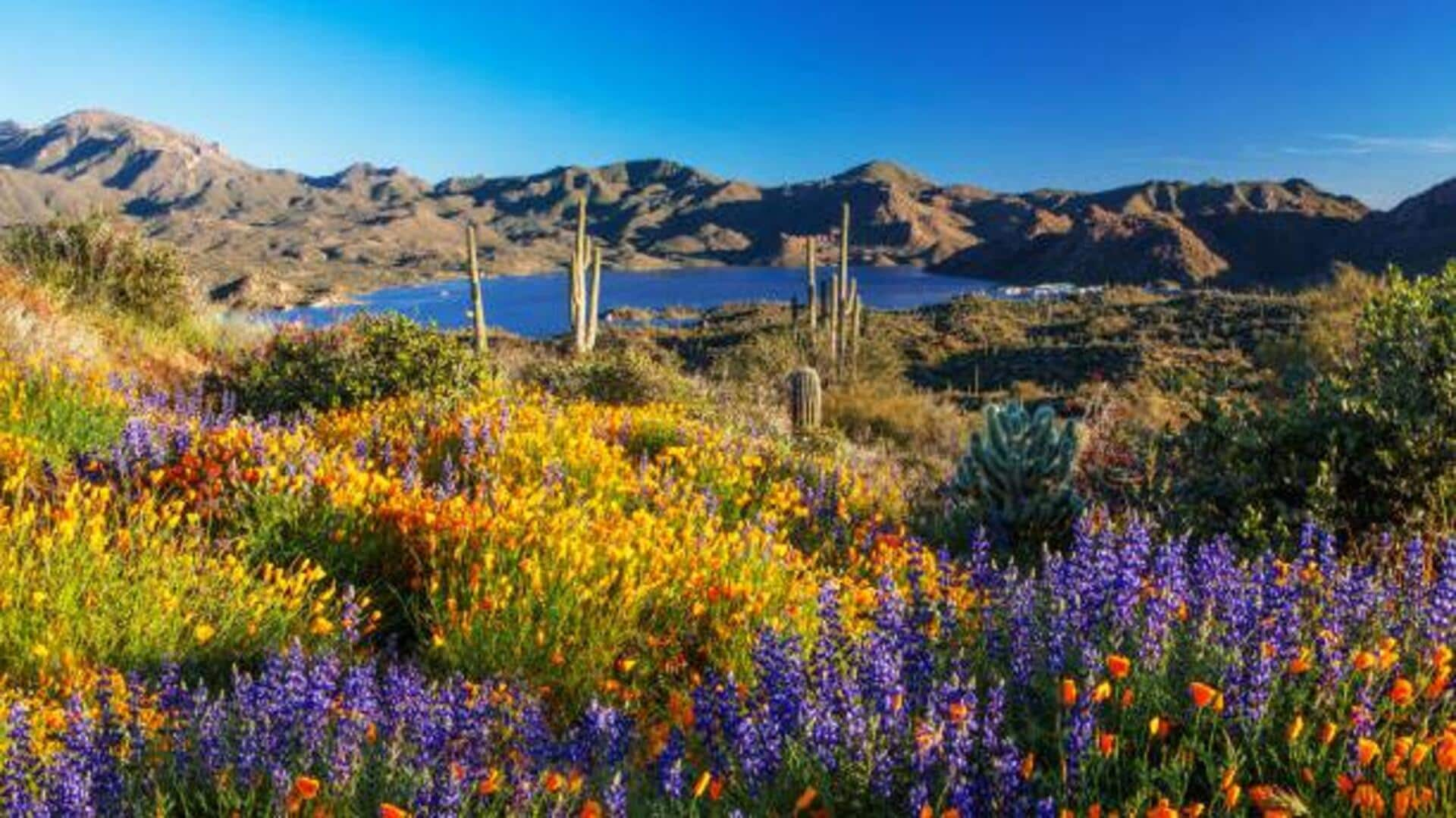
Desert hikes: How to spot unique flowers on your trek
What's the story
Exploring desert blooms makes for a unique trekking experience through hidden flowering valleys. These areas, mostly ignored, turn into vibrant terrains during certain seasons. From a layman's perspective, the amazing desert blooming phenomenon is a testimony to nature's resilience and adaptability. Trekkers can witness an array of colorful flowers that flourish in harsh conditions, starkly contrasting the arid surroundings. Here's all about such treks.
Timing
Best time for desert blooms
The timing of desert blooms varies according to where you are and the climate conditions. Usually, these blooms occur post-rare rain showers, typically between late winters and early spring. In some regions, it can be as early as February or as late as April. Planning your trek around these months increases your chances of witnessing the full splendor of flowering valleys.
Preparation
Essential gear for trekking
Trekking through desert landscapes calls for certain gear to be safe and comfortable. You'll need lightweight clothing with sun protection as high temperatures prevail during the day. A wide-brimmed hat, sunglasses, and sunscreen are important for guarding against UV rays. Further, carrying enough water supplies is critical to avoid getting dehydrated in these dry regions.
Exploration
Navigating hidden valleys
Navigating hidden flowering valleys is all about knowing the terrain and having decent navigation tools. We recommend having maps or GPS devices to avoid getting lost in the vast desert expanses. Some areas may have marked trails, but many are off-trail explorations where trekkers will have to rely on their navigation skills.
Conservation
Respecting local ecosystems
While exploring these unique ecosystems, it is essential to respect local flora and fauna by minimizing impact on natural habitats. Staying on designated paths help preserve delicate plant life, while reducing soil erosion risks. Foot traffic in off-trail areas should be avoided unless necessary for safety reasons, or guided tours allow access without damaging sensitive environments.